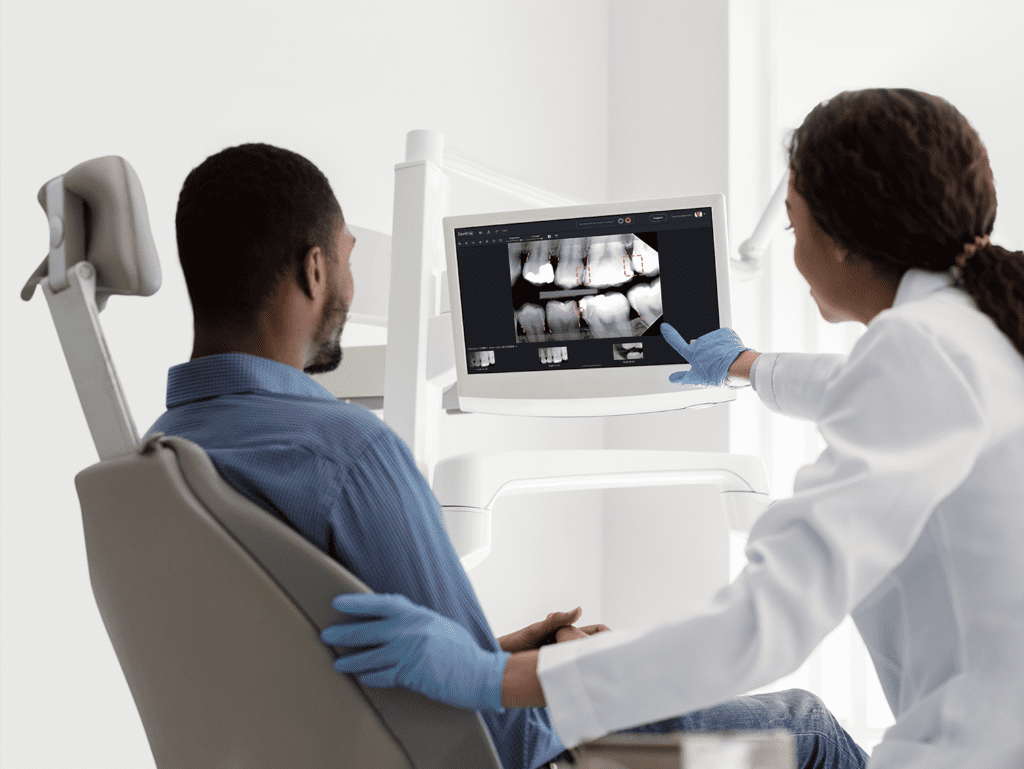In recent years, digital imaging has transformed orthodontics by providing unprecedented precision in diagnosing, planning, and executing treatments. This advancement enhances the accuracy of care, streamlines workflows, and improves patient outcomes.
This blog explores the ways in which digital imaging is reshaping orthodontic practice and the benefits it offers to both practitioners and patients.
The Role of Digital Imaging in Orthodontics
Precise Diagnosis
Digital imaging technologies, such as 3D cone beam computed tomography (CBCT), offer detailed images of the teeth, jaws, and surrounding structures. Unlike traditional X-rays, CBCT provides a comprehensive 3D view, allowing orthodontists to diagnose issues with greater precision.
This detailed visualization is crucial for identifying complex problems and developing effective treatment plans.
Customized Treatment Planning
Digital imaging facilitates highly customized treatment plans. Advanced 3D imaging software enables orthodontists to create accurate simulations of tooth movements and treatment outcomes.
This level of detail ensures that each patient receives a tailored treatment plan, enhancing the effectiveness and predictability of the results.
Enhanced Communication
With digital imaging, orthodontists can present clear visual representations of orthodontic issues and treatment plans to patients. High-resolution images and 3D models help patients better understand their diagnosis and proposed treatments, fostering greater engagement and compliance.
Benefits of Digital Imaging for Orthodontic Practice
Increased Accuracy
Digital imaging technologies reduce diagnostic and treatment planning errors. The detailed images allow orthodontists to assess tooth alignment, jaw relationships, and structural issues with high precision. This accuracy leads to more effective treatments and fewer adjustments.
Faster and More Efficient Workflow
The efficiency of digital imaging eliminates the need for physical X-ray films and manual measurements. Images can be quickly captured, analyzed, and shared, speeding up the diagnostic and planning phases.
This streamlining enhances the patient experience by reducing wait times and multiple appointments.
Improved Treatment Outcomes
Accurate diagnoses and customized treatment plans lead to better outcomes. Digital imaging allows orthodontists to monitor progress closely and make real-time adjustments. This leads to more successful treatments and increased patient satisfaction.
Enhanced Patient Safety
Digital imaging techniques, such as CBCT, use lower radiation doses compared to traditional X-rays, reducing patient exposure. Additionally, digital records are easily stored and retrieved, minimizing the risk of lost or damaged information.
This improved safety is especially important for patients who may need multiple imaging sessions.
Integration with Other Technologies
Digital imaging often integrates with other advanced technologies to further enhance orthodontic care:
3D Printing: Detailed images from digital imaging are used to create 3D-printed models of the teeth and jaws. These models are valuable for treatment planning, simulation, and the creation of custom orthodontic appliances.
Teleorthodontics: Digital imaging supports remote consultations and monitoring, allowing orthodontists to track progress and make adjustments without requiring in-person visits. This integration improves convenience and accessibility for patients.
Digital imaging is revolutionizing orthodontics by offering greater accuracy, efficiency, and effectiveness in treatment. Through precise diagnostics, customized planning, and enhanced patient communication, digital imaging improves both the quality of care and patient outcomes.
As technology continues to advance, digital imaging will play an increasingly vital role in orthodontic practice, setting new standards for excellence and innovation in patient care.


